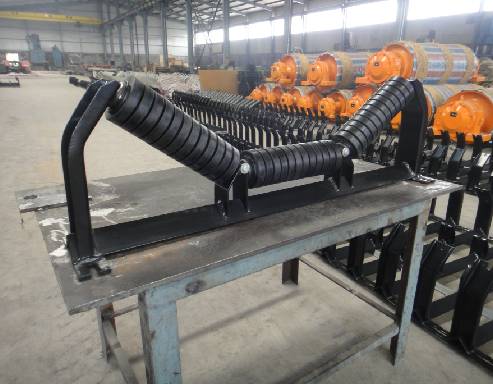 Afrikaans
Afrikaans  Albanian
Albanian  Amharic
Amharic  Arabic
Arabic  Armenian
Armenian  Azerbaijani
Azerbaijani  Basque
Basque  Belarusian
Belarusian  Bengali
Bengali  Bosnian
Bosnian  Bulgarian
Bulgarian  Catalan
Catalan  Cebuano
Cebuano  Corsican
Corsican  Croatian
Croatian  Czech
Czech  Danish
Danish  Dutch
Dutch  English
English  Esperanto
Esperanto  Estonian
Estonian  Finnish
Finnish  French
French  Frisian
Frisian  Galician
Galician  Georgian
Georgian  German
German  Greek
Greek  Gujarati
Gujarati  Haitian Creole
Haitian Creole  hausa
hausa  hawaiian
hawaiian  Hebrew
Hebrew  Hindi
Hindi  Miao
Miao  Hungarian
Hungarian  Icelandic
Icelandic  igbo
igbo  Indonesian
Indonesian  irish
irish  Italian
Italian  Japanese
Japanese  Javanese
Javanese  Kannada
Kannada  kazakh
kazakh  Khmer
Khmer  Rwandese
Rwandese  Korean
Korean  Kurdish
Kurdish  Kyrgyz
Kyrgyz  Lao
Lao  Latin
Latin  Latvian
Latvian  Lithuanian
Lithuanian  Luxembourgish
Luxembourgish  Macedonian
Macedonian  Malgashi
Malgashi  Malay
Malay  Malayalam
Malayalam  Maltese
Maltese  Maori
Maori  Marathi
Marathi  Mongolian
Mongolian  Myanmar
Myanmar  Nepali
Nepali  Norwegian
Norwegian  Norwegian
Norwegian  Occitan
Occitan  Pashto
Pashto  Persian
Persian  Polish
Polish  Portuguese
Portuguese  Punjabi
Punjabi  Romanian
Romanian  Russian
Russian  Samoan
Samoan  Scottish Gaelic
Scottish Gaelic  Serbian
Serbian  Sesotho
Sesotho  Shona
Shona  Sindhi
Sindhi  Sinhala
Sinhala  Slovak
Slovak  Slovenian
Slovenian  Somali
Somali  Spanish
Spanish  Sundanese
Sundanese  Swahili
Swahili  Swedish
Swedish  Tagalog
Tagalog  Tajik
Tajik  Tamil
Tamil  Tatar
Tatar  Telugu
Telugu  Thai
Thai  Turkish
Turkish  Turkmen
Turkmen  Ukrainian
Ukrainian  Urdu
Urdu  Uighur
Uighur  Uzbek
Uzbek  Vietnamese
Vietnamese  Welsh
Welsh  Bantu
Bantu  Yiddish
Yiddish  Yoruba
Yoruba  Zulu
Zulu Understanding the Role of Snub Pulleys in Enhancing Belt Conveyor Efficiency and Performance
Understanding the Snub Pulley in Belt Conveyors
Belt conveyors are pivotal in modern material handling systems, utilized extensively in various industries for transporting bulk materials and heavy goods efficiently. One of the crucial components of a belt conveyor system is the snub pulley. This article delves into the function, design, and significance of the snub pulley in belt conveyors.
What is a Snub Pulley?
A snub pulley, also known as a take-up pulley or tensioning pulley, is a type of drum or wheel around which the conveyor belt wraps partially. Its primary role is to increase the contact area of the belt with the drive pulley, thereby improving the overall grip and tension. This enhanced grip is essential for providing adequate friction between the belt and the drive pulley, enabling the efficient transfer of power and ensuring that the belt moves smoothly over the pulleys.
Key Functions of the Snub Pulley
1. Increasing Belt Tension One of the primary functions of the snub pulley is to increase the tension in the conveyor belt. By adjusting the position of the snub pulley, operators can alter the tension in the belt, which is vital for maintaining optimal performance and preventing slippage.
2. Enhancing Friction The snub pulley creates additional contact between the belt and the drive pulley. This increased contact enhances friction, ensuring that the belt transmits the rotational force from the motor effectively. A well-tensioned belt can carry more load without slipping, which is crucial for the efficiency of a conveyor system.
snub pulley in belt conveyor

3. Belt Tracking Proper belt tracking is essential for the longevity of the conveyor system. The snub pulley helps in guiding the belt and keeping it aligned with the pulleys. Misalignment can cause undue wear and tear on the belt and other components, leading to costly repairs and downtime.
4. Facilitating Maintenance In certain configurations, snub pulleys can be designed to be adjustable, allowing for easier access during maintenance. Adjusting tension without removing other components can significantly reduce maintenance time and improve operational efficiency.
Design Considerations
The design and placement of snub pulleys are crucial for their effective operation. They should be positioned at an angle that maximizes the tension without placing undue stress on the belt or other components. The diameter and material of the snub pulley also play a significant role in its performance; larger diameter pulleys reduce wear on the belt, while durable materials can withstand the stresses encountered during operation.
Additionally, proper lubrication of the snub pulley bearings is essential to minimize friction and wear, ensuring a longer lifespan. Regular inspections should be scheduled to check for any signs of damage, misalignment, or wear that could impede the pulley’s performance.
Conclusion
In conclusion, the snub pulley is an integral component of belt conveyor systems, playing a vital role in enhancing belt tension, improving frictional contact, and ensuring proper tracking. Its design and maintenance are crucial for the optimal performance and longevity of the conveyor system. Understanding the function and importance of snub pulleys allows operators and engineers to streamline operations, reduce downtime, and enhance productivity in material handling. As industries continue to evolve and expand, the efficient functioning of every component, including the snub pulley, remains essential in achieving operational excellence in conveyor systems.
-
Revolutionizing Conveyor Reliability with Advanced Rubber Lagging PulleysNewsJul.22,2025
-
Powering Precision and Durability with Expert Manufacturers of Conveyor ComponentsNewsJul.22,2025
-
Optimizing Conveyor Systems with Advanced Conveyor AccessoriesNewsJul.22,2025
-
Maximize Conveyor Efficiency with Quality Conveyor Idler PulleysNewsJul.22,2025
-
Future-Proof Your Conveyor System with High-Performance Polyurethane RollerNewsJul.22,2025
-
Driving Efficiency Forward with Quality Idlers and RollersNewsJul.22,2025





























